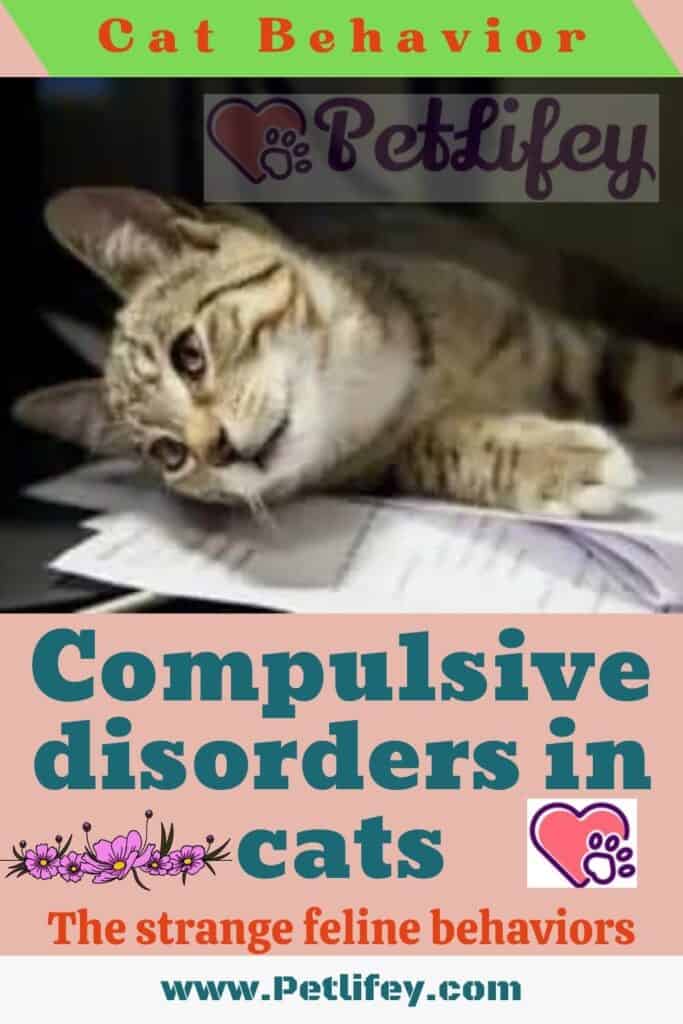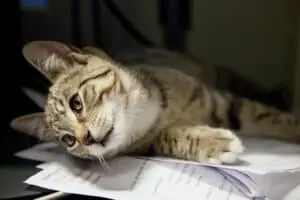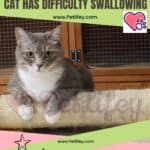
Sometimes it is easy to notice strange behaviors in cats, which take on an obsessive character: these are compulsive disorders in cats, much more common than you think.
By carefully observing the behavior of a cat, it may happen to notice something strange: cats, just like humans, can experience periods characterized by high levels of stress and anxiety during which they tend to develop strange behaviors that are defined compulsive disorders.
In order for a feline behavior to be defined compulsive, it must have an obsessive character, an abnormal frequency and no specific purpose: these behavioral disorders, in fact, concern activities that tend to be normal in the life of the cat that become problematic when they are exasperated.
The peculiarity of compulsive disorders in cats is that they are simultaneously the cause and the direct consequence of a physical or emotional discomfort of the animal.
Compulsive disorders in cats: what they are and how to cure them
A stressed, anxious, traumatized or health-impaired cat pours its physical and emotional discomfort into apparently strange behaviors: it may begin to lick itself more often, to tear its hair, to swallow objects, to whirl around on itself.
These signals start quietly and often the owner does not notice them, except when the compulsive behaviors are now so frequent, intense and ingrained as to represent a problem that is often difficult to solve. For this reason, it is important to always carefully observe our feline friend and learn to notice even the most subtle oddities.
Causes of Compulsive Disorders in Domestic Felines
The causes of a compulsive disorder in cats are almost always emotional in nature, or in some cases they are related to a physical problem. In particularly rare cases, there may be a neurological problem that forces the cat to engage in compulsive behaviors of various kinds.
Among the most common causes of compulsive disorder in a cat, we can point out:
– few stimuli in the environment: the cat needs to move and play to express its true nature,
– too many cats in a space not big enough for everyone,
– little interaction with family members,
– sudden and big changes relevance, such as the birth of a child or a move.
The main compulsive disorders in cats
EXCESSIVE GROOMING
Grooming is the daily grooming activity that cats put into practice for their self-grooming. If the licking of the fur becomes excessive, i.e. if the cat spends more than half of its day grooming itself, it is likely that there is some skin problem in the cat. In severe cases, the cat will lick itself so much that it will tear its fur.
Excessive self-licking can have among its causes a skin allergy that depends on various factors: mold, parasites, pollen, dust or food. In other cases, feline cystitis, or inflammation of the anal sacs, could be behind this compulsive behavior.
AGGRESSIVENESS AND SELF-TRAUMATISM
Stressed cats often react with aggression, which sometimes turn to themselves and hurt themselves: a typical example is that of the cat biting its paw until it bleeds. In other cases, the cat turns its aggression outward and becomes violent towards other cats or towards people.
SUCTION OF WOOL
Very frequent behavior in kittens, it represents a way to make up for the lack of the mother: the behavioral problem arises in the case of adult cats. This compulsive disorder is a way that the cat uses to immerse himself in the atmosphere of childhood and can be aimed at fabrics or plastic objects: the danger arises from the accidental ingestion of materials that could cause a dangerous intestinal obstruction.
FELINE HYPERESTHESIA
This term defines the cat’s excessive sensitivity to stimuli, which includes a series of symptoms: dilated pupils, excessive grooming, curling of the hair, hallucinations and desperate attempts to escape from an imaginary danger.
This type of attack also occurs multiple times a day, with aggressive behaviors coming as quickly as they disappear just as quickly. They are usually preceded by requests for attention and, at the end of the crisis, the cat appears confused and disoriented.
What to do if the cat has compulsive disorder?

Compulsive disorders in cats are difficult to solve: surely, the first thing to do is to rule out that there are physical causes. Once it is established that it is an anxiety or stress problem, the cause must be eliminated.
Among the useful remedies is not to encourage the cat in obsessive behaviors: one should not stroke it, nor give it too much attention. Likewise, it is absolutely useless to reproach him: it would only serve to increase the cat’s discomfort.
To reduce your cat’s stress, it is helpful to spend time with him and play together. An excellent solution is also to distract him as soon as the first signs of obsessive behavior appear, making him concentrate on something else.
In severe cases, the intervention of a specialized behaviorist may be useful. If, on the other hand, the problem is due to physical causes, the vet will tell you the best way to treat your cat.






